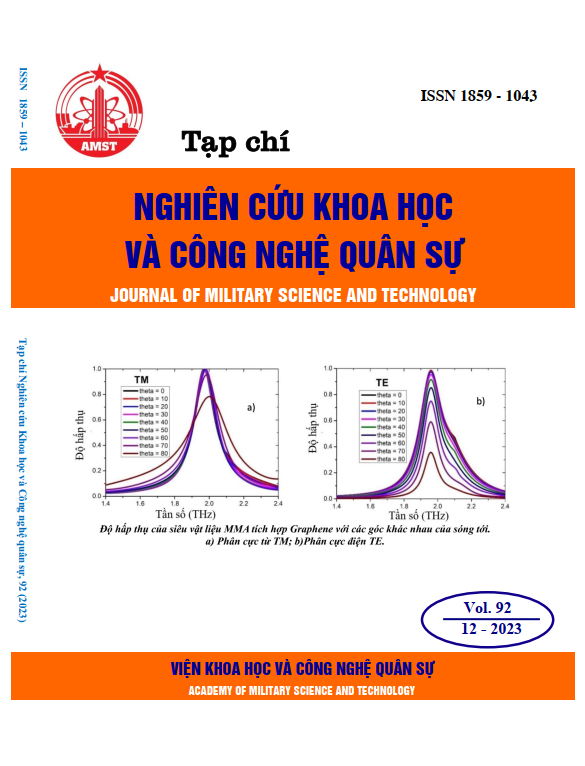Effect of combustion catalyst on the burning rate and temperature transformation in fire zones of propellant on nitrate cellulose and nitroglycerin with P/H = 1
349 viewsDOI:
https://doi.org/10.54939/1859-1043.j.mst.92.2023.92-99Keywords:
Ballistic; Propellant A; Phase K; Catalysis burning; PMC; Thermopair.Abstract
A mixture of combustion catalysts, including lead-copper phthalate (PMC) and carbon (C), not only affects the burning rate of fuel based on cellulose nitrate and nitroglycerin with P/H=1, but also affects the combustion region of the fuel temperature distribution. The effect of this burning catalyst system on the fuel combustion rate is most evident in the low pressure range (0.7 MPa), the higher the pressure, the lower the effect (Z~1) for the catalyst containing 6% PMC + 1% C for the highest Z factor A catalytic mixture with such a ratio of components increases the combustion temperature compared to the background sample at low pressure: the surface temperature of the K-phase increases from 622 to 654 K, the maximum combustion temperature increases from 1399 to 1527 K, and the heat release increases transfer coefficient χ on the surface of the solid fuel phase from 0.00071 to 0.00247 cm2/s.
References
[1]. А.П. Денисюк, “Горение пороха и ТРТ”, с. 7-42, (1988).
[2]. Lengelle G., Duterque J., Trubert J. F, “Special course on internal Aerodynamics in Solid rocket Propulsion”, Combustion of Solid Propellants, Belgium, pp. 63, (2002).
[3]. А. П. Денисюк, Марголин А. Д., Токарев Н. П. и др. “Роль сажи при горении баллиститных порохов со свинецсодержащими катализаторами”, Физика горения и взрыва,Т. 13, № 4, с. 576-584, (1977).
[4]. А. П. Денисюк, Марголин А. Д., Токарев Н. П. и др. “Закономерности горения баллиститных составов при перегрузках”, ФГВ, Т. 14, № 4, с. 29-36, , (1978).
[5]. А. П. Денисюк, Демидова Л. А., Галкин В. И. “Ведущая зона горения баллиститных порохов с катализаторами”, ФГВ, Т .31, № 2, с. 32-40, (1995).
[6]. Ньен Чан Аунг. “Влияние состава пороха на эффективность действия катализаторов горения”, дис. канд. наук. Москва. 143 с, (2008).
[7]. А. А. Зенин. “Исследование механизма горения гексогена и октогена различными экспериментальными методиками”, Физика горения и взрыва, Т.45, № 5, с. 60-81, (2009).
[8]. А. П. Денисюк. “Определение баллистический характеристик и параметров горения порохов и трт”, Лаб. Практикум, М:РХТУ им. Д.И.Менделеева.136 с, (2009).







